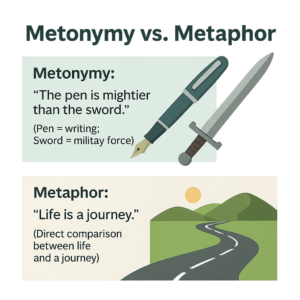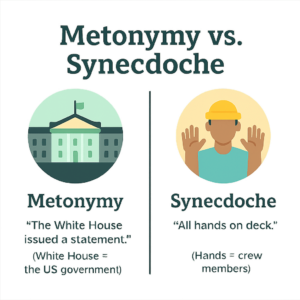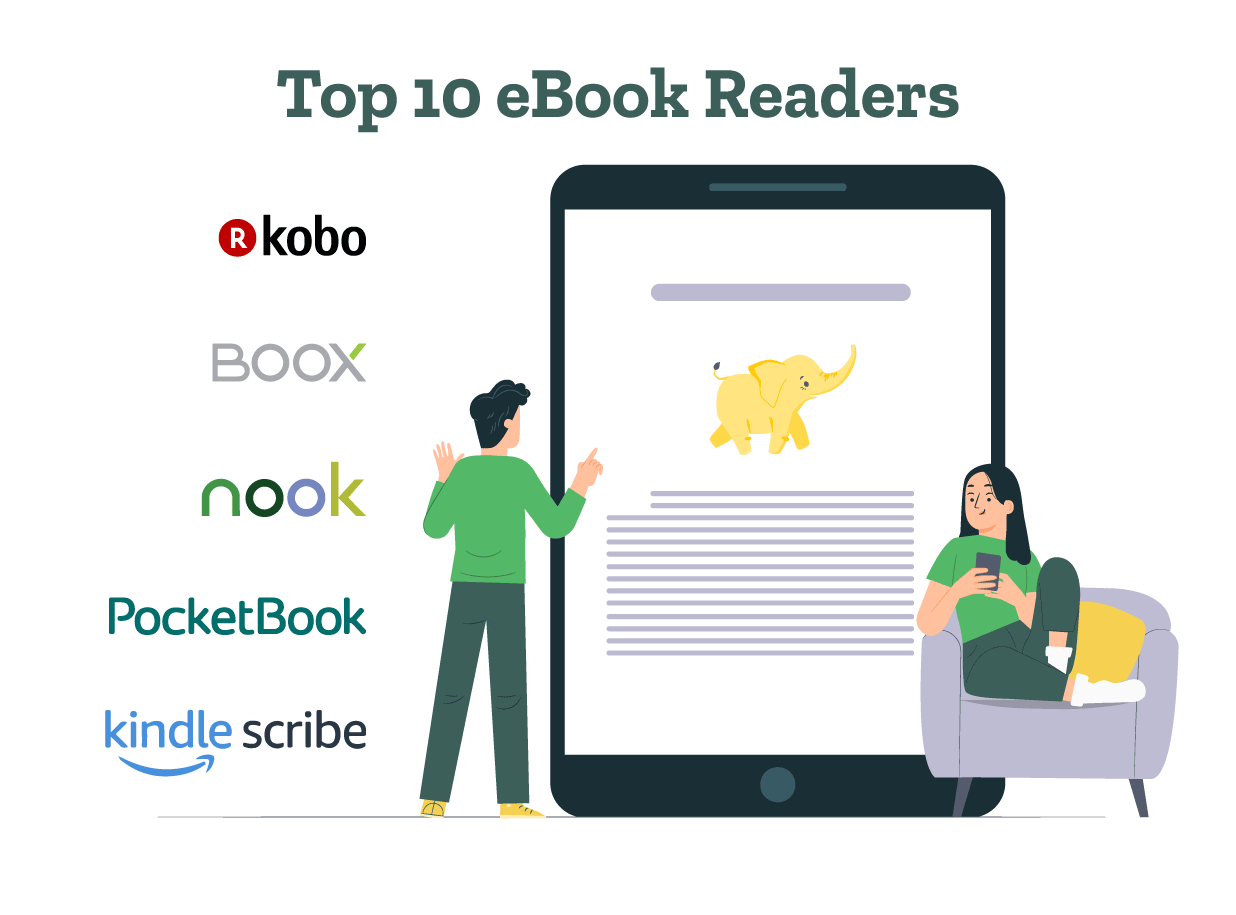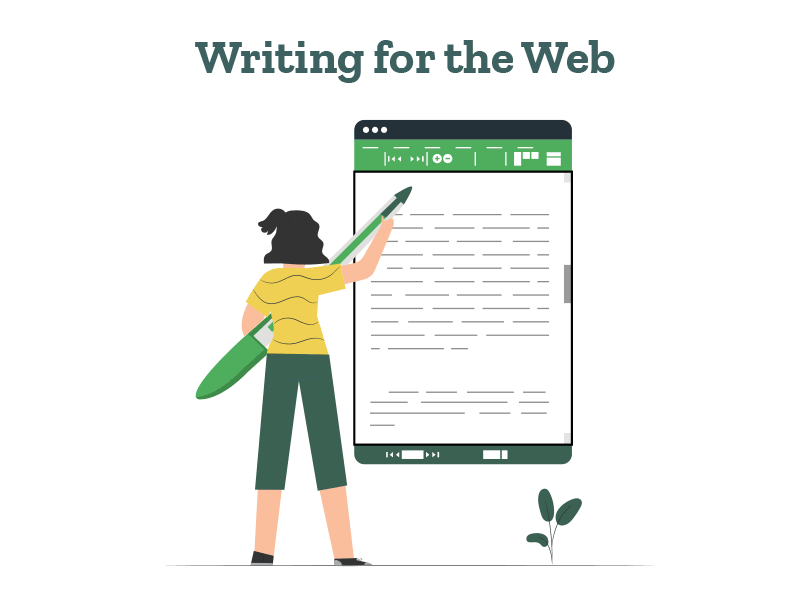Still have questions? Leave a comment

Checklist: Dissertation Proposal
Enter your email id to get the downloadable right in your inbox!
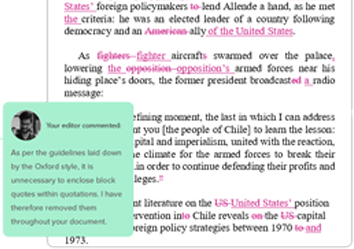
Examples: Edited Papers
Enter your email id to get the downloadable right in your inbox!
Need
Editing and
Proofreading Services?

Metonymy: Definition, Examples, and How to Use It In Writing
 May 16, 2025
May 16, 2025 5
min read
5
min read
Language has an enchanting way of enriching our thoughts and expressions, especially through literary devices. Among its many facets, literary devices play a crucial role in helping writers create engaging and memorable narratives. One such device is metonymy, which is quite often overlooked by many.
In this blog, we will explore the definition of metonymy, its importance, and how to use it effectively in your work. By the end, you will understand what metonymy is and gain insights into its types, examples, and unique role in literature and beyond.
Ensure Metonymy And Other Figures Of Speech In Your Work Are Correct! Learn More
What is metonymy?
Metonymy is a figure of speech in which one thing is substituted for another based on a close association. Unlike metaphors, which rely on similarity or resemblance, metonymy draws its powerful effects from concept-level relationships.
For instance, when we say, “The crown will decide the nation’s fate,” the word “crown” refers to monarchy or royal authority. This simple substitution conveys complex ideas while adding elegance to the language.
In essence, the definition of metonymy can be summarized as using a related term to represent something larger or more abstract. It is a subtle yet effective tool for conveying meaning, often employed in poetry, prose, and everyday speech.
Importance of metonymy
Why is metonymy important? The metonymy meaning states that the importance of this figure of speech lies in its ability to enhance communication through familiar associations for effective communication.
Here are some key benefits of using metonymy:
1. Clarity through context: Metonymy simplifies communication by helping you employ a single word or phrase that audiences readily associate with on a broader level or as a broader concept. For example, “Hollywood” is often used as a metonym for the American film industry.
2. Adding depth to writing: It helps writers infuse their work with nuance and depth, which naturally makes the text more engaging.
3. Creating emotional resonance: By evoking shared cultural or historical associations, metonymy can strike an emotional chord. For instance, referring to “the Oval Office” prompts thoughts of presidential authority and decision-making.
When used correctly, this figure of speech enables you to sound persuasive and influential. By understanding what metonymy means and applying it effectively in your writing, you can create vivid imagery and connect with your audience on a deeper level.
How does it differ from other literary devices?
It is quite common to confuse metonymy with other literary devices like metaphor and synecdoche. Their usage seems similar and can be considered overlapping, so we believe it is important to understand how they are different.
In this section, let’s break down the distinctions:
1. Metonymy vs. Metaphor
While both involve indirect references, metaphors are based on similarity, whereas metonymy relies on association.
For instance:
- Metonymy: “The pen is mightier than the sword.” (Pen = writing; Sword = military force)
- Metaphor: “Life is a journey.” (Direct comparison between life and a journey)
2. Metonymy vs. Synecdoche
Synecdoche is usually considered a subset of metonymy where a part represents the whole or vice versa, and this is a practical approach to learning this figure of speech. It is interesting to note, however, that some language experts believe it is an independent figure of speech.
For example:
- Metonymy: “The White House issued a statement.” (White House = the US government)
- Synecdoche: “All hands on deck.” (Hands = crew members)
Understanding these distinctions can sharpen your grasp of figurative language examples and help you use each device skillfully.
Types of metonymy
Metonymy is seen appearing in text in various forms, each offering unique ways to enrich writing. Here are two primary types of metonymy:
1. Conceptual Metonymy
Conceptual metonymy links abstract concepts to tangible objects or ideas. It is commonly used in academic and creative writing to illustrate complex themes. For example:
- “She has a good head on her shoulders.” (Head = intelligence; here, the attribute intelligence is reflected in the word “head”).
- “The stage was her life.” (Stage = theater or performance; here, the place denoted by stage is used to describe life).
By making abstract ideas more relatable, conceptual metonymy can boost the impact of your writing.
2. Referential Metonymy
Referential metonymy involves direct substitutions, often with cultural or historical significance. Some examples are:
- “The Kremlin declined to comment.” (Kremlin = Russian government)
- “Reading Shakespeare enriches the mind.” (Shakespeare = his works)
This type is widely used in journalism, literature, and rhetoric for its clarity and impact.
Examples of metonymy in literature
Literature abounds with examples of metonymy, demonstrating its versatility and effectiveness. Here are some notable uses:
- William Shakespeare, Julius Caesar:
“Friends, Romans, countrymen, lend me your ears.”
Here, “ears” represent attention or listening, creating an immediate connection with the audience.
- F. Scott Fitzgerald, The Great Gatsby:
“The eyes of Doctor T. J. Eckleburg are watching.”
In this example, the billboard symbolizes moral judgment and societal oversight.
- George Orwell, 1984:
“Big Brother is watching you.”
“Big Brother” acts as a metonym for oppressive government surveillance.
These examples of metonymy in literature illustrate how the device effectively conveys themes, character emotions, and societal critiques.
Why do writers use metonymy?
What is the use of a figure of speech if it does not make writing appealing and engage the reader? That is exactly why writers use metonymy, too.
Writers across genres employ metonymy to achieve various artistic and practical goals. Here’s why:
1. Creating memorable imagery
Metonymy enables writers to paint vivid pictures in readers’ minds. Phrases like “the silver screen” or “the bottle” evoke strong, immediate associations that transcend literal meaning.
2. Eliciting emotional responses
Metonymy can effortlessly stir emotions through shared cultural references. For instance, “Wall Street” evokes thoughts of financial power and economic influence.
3. Improving narrative flow
By condensing complex ideas into concise phrases, metonymy enhances readability and storytelling. That is why it works well in poems and short stories.
4. Building symbolism
Metonymy often doubles as a symbolic device in fiction and poetry, adding layers of meaning to the text.
5. Engaging readers
By forming unexpected, imaginative, or thought-provoking associations across text, this figure of speech engages readers and brings novelty to writing.
If you are looking to expand your creative writing techniques and skills, metonymy offers endless possibilities for enriching prose and poetry alike.
How to use metonymy in your writing
Ready to incorporate metonymy into your work? Here are some tips that might help you:
1. Start with familiar associations
Use commonly recognized symbols or terms to ensure your readers understand the connection. For example, refer to “the press” when discussing journalism.
2. Align with tone and context
Metonymy should complement the tone of your writing. A playful metonymy might not suit a solemn piece, and vice versa.
3. Avoid overuse
Like any literary device, metonymy should be used judiciously. Overloading your text with it can dilute its impact.
4. Experiment with subtlety
Challenge yourself to craft nuanced metonyms that resonate with readers. For example, instead of saying “She was ambitious,” write, “Her eyes were set on the horizon.”
Metonymy is a dynamic literary device that enriches writing by linking concepts and associations. It works well in poems, novels, and essays. Learning what metonymy is and how to use it effectively can transform your prose. From conceptual metonymy to figurative language examples, the possibilities are endless.
If you are looking to enhance your writing with precision and flair, consider PaperTrue’s editing and proofreading services. Our expert editors ensure that your content sounds impactful while preserving your unique voice. Let us help you improve your text—start your journey with PaperTrue today!
Here are some articles you might want to check out:

